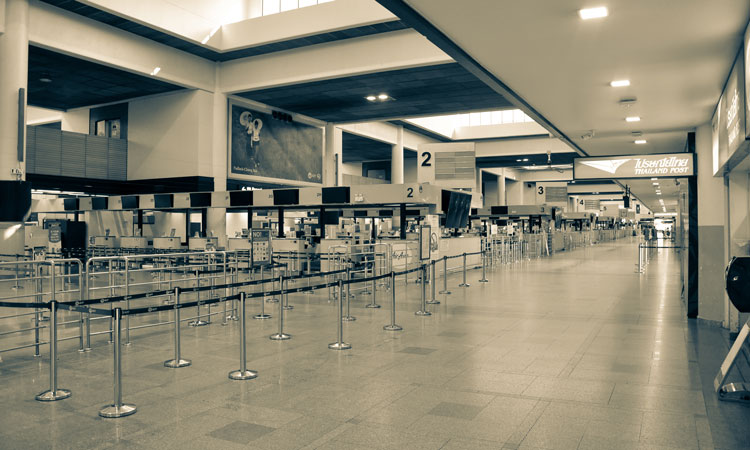ACI World data outlines 91.3 per cent decline in passenger traffic in May 2020
- Like
- Digg
- Del
- Tumblr
- VKontakte
- Buffer
- Love This
- Odnoklassniki
- Meneame
- Blogger
- Amazon
- Yahoo Mail
- Gmail
- AOL
- Newsvine
- HackerNews
- Evernote
- MySpace
- Mail.ru
- Viadeo
- Line
- Comments
- Yummly
- SMS
- Viber
- Telegram
- Subscribe
- Skype
- Facebook Messenger
- Kakao
- LiveJournal
- Yammer
- Edgar
- Fintel
- Mix
- Instapaper
- Copy Link
Posted: 31 July 2020 | International Airport Review | No comments yet
Though May 2020 saw a slight increase in passenger traffic demand, the aviation industry continues to suffer as a result of COVID-19.


Airports and airlines are both feeling the impacts of diminishing air travel demand
New data published by Airports Council International (ACI) World has revealed that global passenger traffic declined by 91.3 per cent year over year in May 2020 as a result of the on-going COVID-19 pandemic. This is slightly above the worst decline of global passenger numbers in the history of the aviation industry of 94.4 per cent, which was recorded only the month before, in April 2020.
As in previous months, the effect of the COVID-19 pandemic on the air freight industry was not as significant in May 2020 when compared to the passenger market. Global air freight volumes posted slightly better results in May 2020 when compared to April 2020, with a decline of 17.9 per cent when compared to May 2019.
ACI World’s Director General, Luis Felipe de Oliveira, said: “After a devastating month in April for the aviation industry, when global air travel came to a virtual halt, data for May revealed a tiny sign of a recovery driven by the domestic markets in China and the United States. In the Asia-Pacific and North American regions, there were signs for optimism, with the data showing some early improvement in domestic passenger traffic, but international traffic continued to be practically non-existent in May.”
He continued: “As in previous months, global air freight volumes have not been affected to the same extent as passenger traffic and showed signs of a slight upward curve, but, with most of the passenger fleet still grounded, capacity was dramatically reduced.
“Airports are important engines of growth, and the recovery of this sector will be a significant driver of the global economic recovery. But this will only be sustained if passengers, staff and the public have confidence in air travel. ACI’s recently launched Airport Health Accreditation programme will help to restore this passenger confidence, assisting airports by assessing new health measures and procedures introduced as a result of the COVID-19 pandemic,” he concluded.
Passenger traffic
Besides North America and Asia-Pacific, all other regional markets posted declines higher than 95 per cent of their global passenger traffic. The start of a slow recovery of the domestic traffic helped North America and Asia-Pacific to post slightly better figures, with decreases of 90.3 per cent and 82.5 per cent, respectively. International passenger traffic continues to be virtually halted, with all regions recording decline above 98 per cent for a second consecutive month.
Air freight
The COVID-19 outbreak continues to heavily impact all major freight markets, except for North America, but small gains started to emerge in May 2020 when compared to the previous month. Globally, air freight volumes were reduced by almost a fifth, with a drop of 17.9 per cent when compared to May 2019.
Substantial losses were recorded in Africa (38.3 per cent), Latin America-Caribbean (34.6 per cent) and the Middle East (38.2 per cent), while Asia-Pacific (21.5 per cent) and Europe (18.7 per cent) recorded lesser but still sizeable volume losses. North America recorded a less significant drop of 4.6 per cent in total freight volumes, alleviated by a robust domestic freight market that recorded an increase of 0.1 per cent compared to a substantial loss of 11 per cent for its international freight market.
The international air freight market’s negative trend has soothed in May 2020, with a loss of 19.6 per cent compared to the previous month’s decrease of 26.4 per cent. Domestic freight volumes followed a similar path and posted a slight improvement to 13.6 per cent in May 2020, compared to 13.8 per cent in April 2020.


















